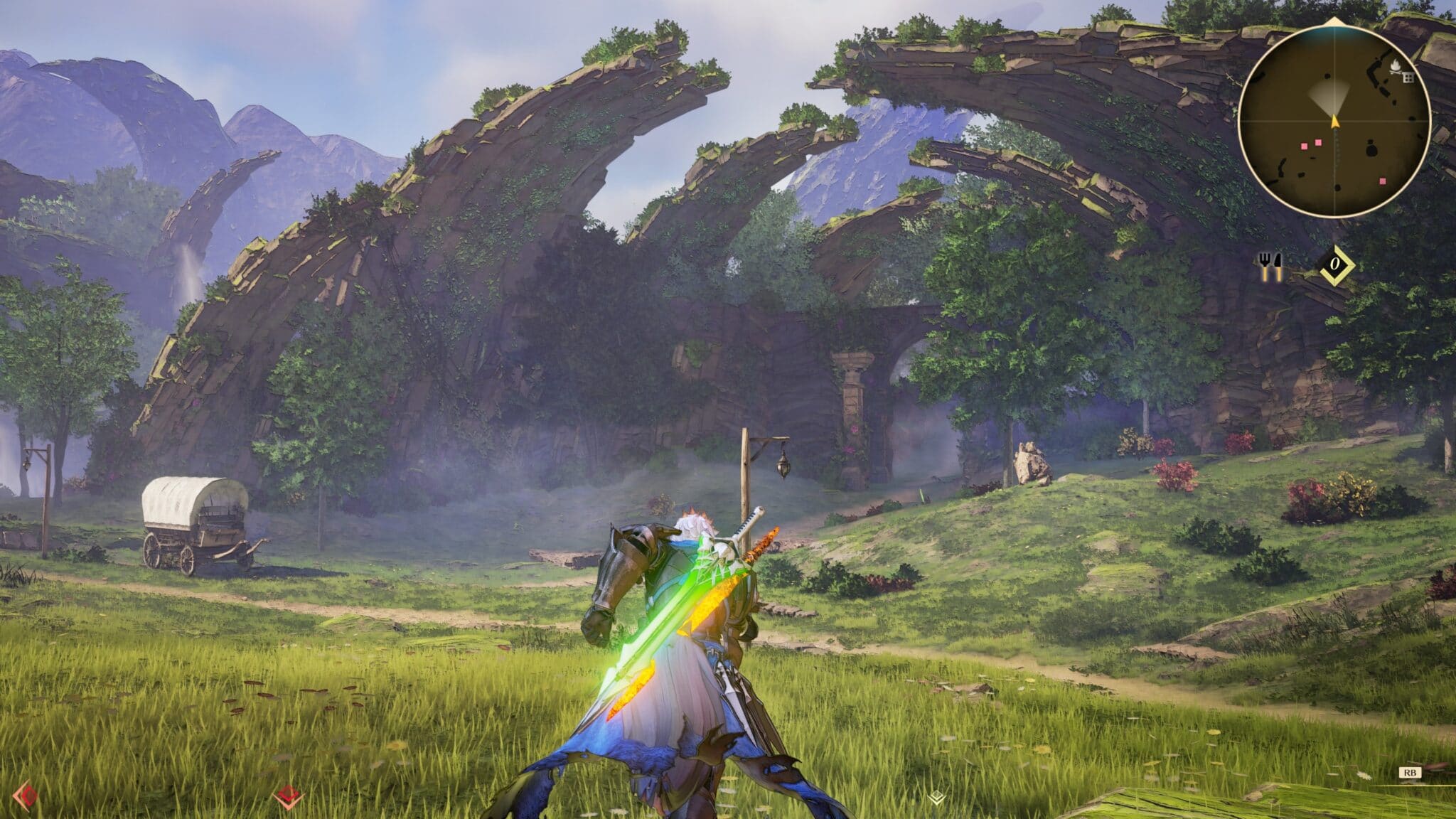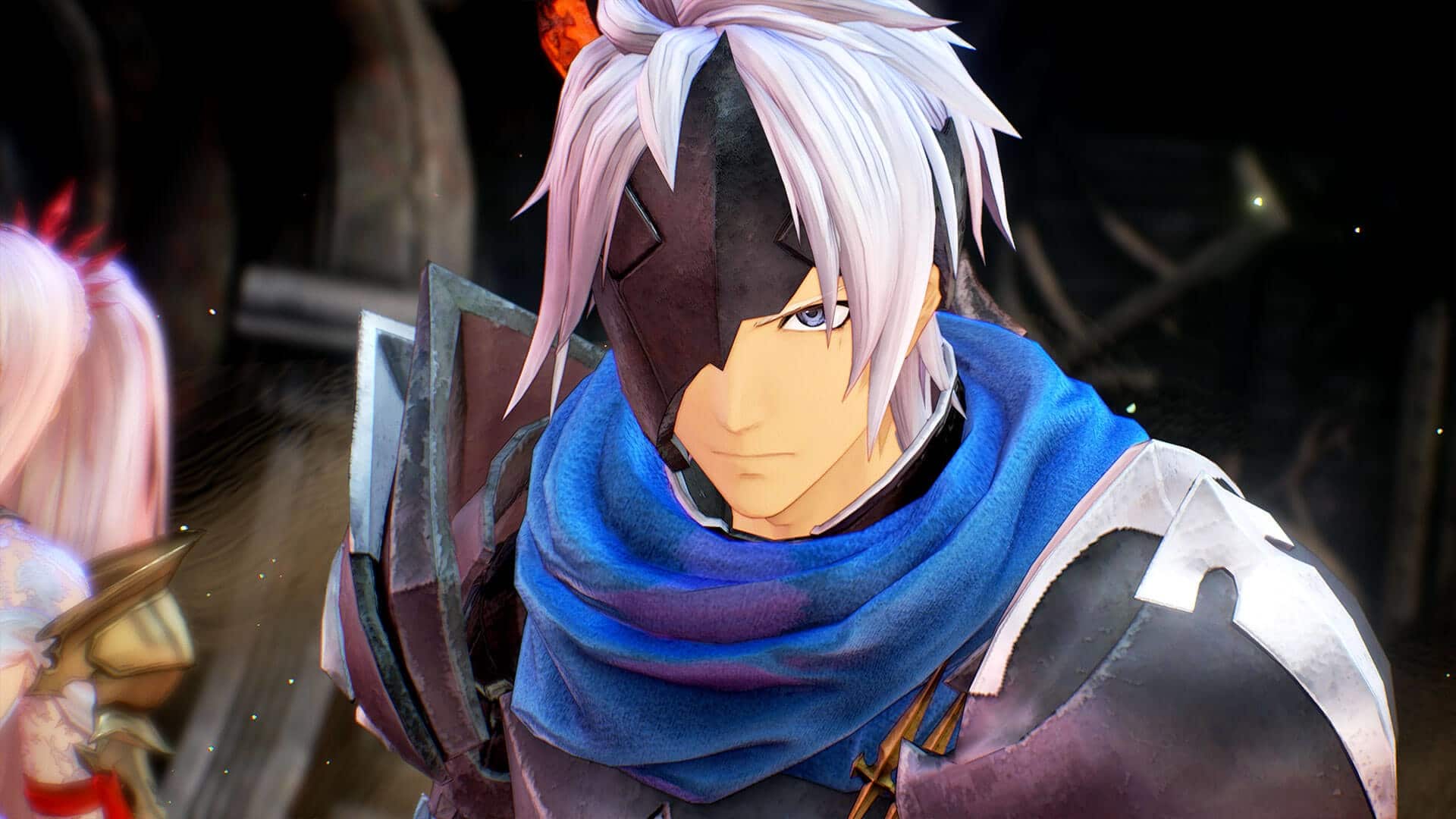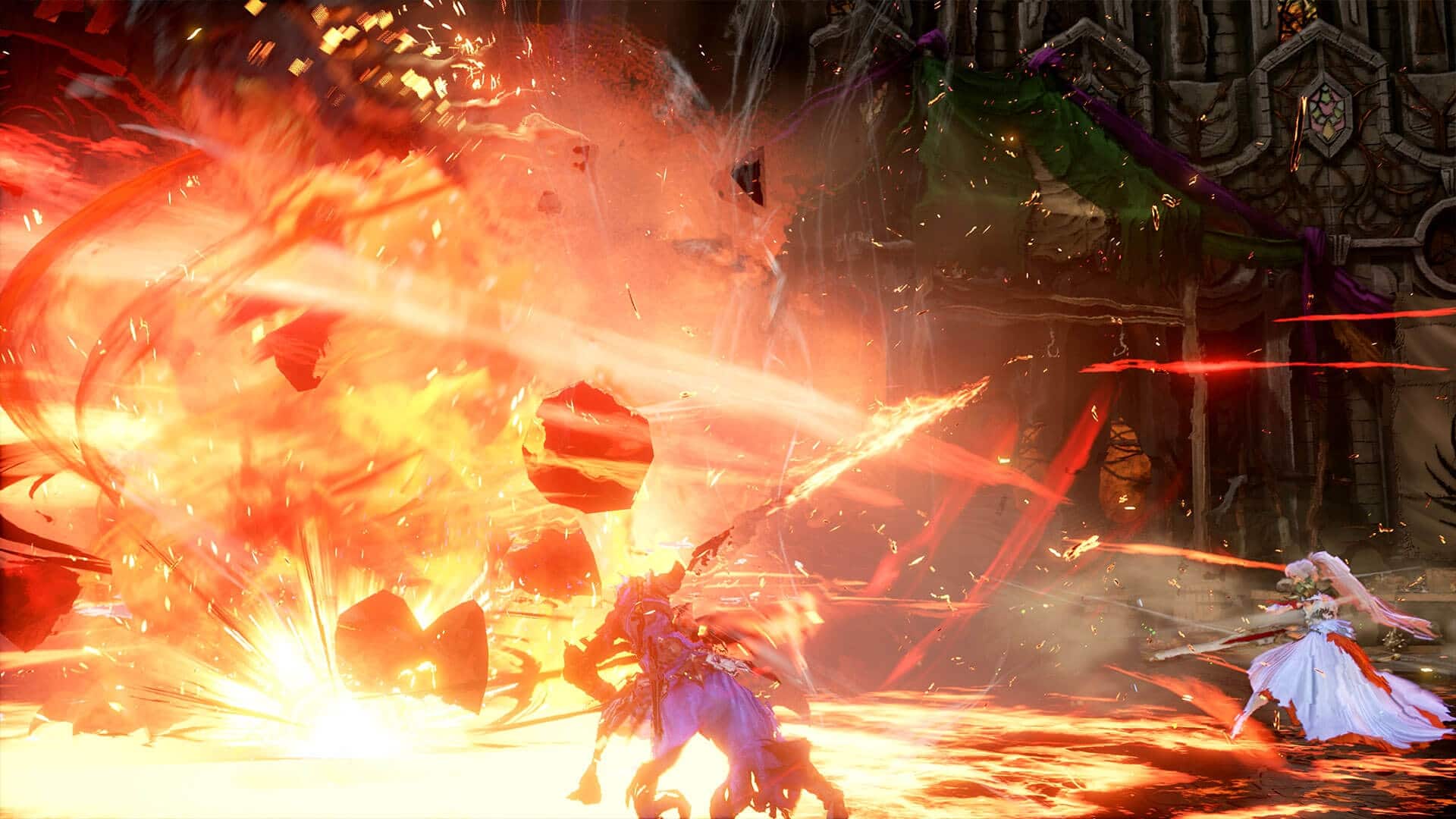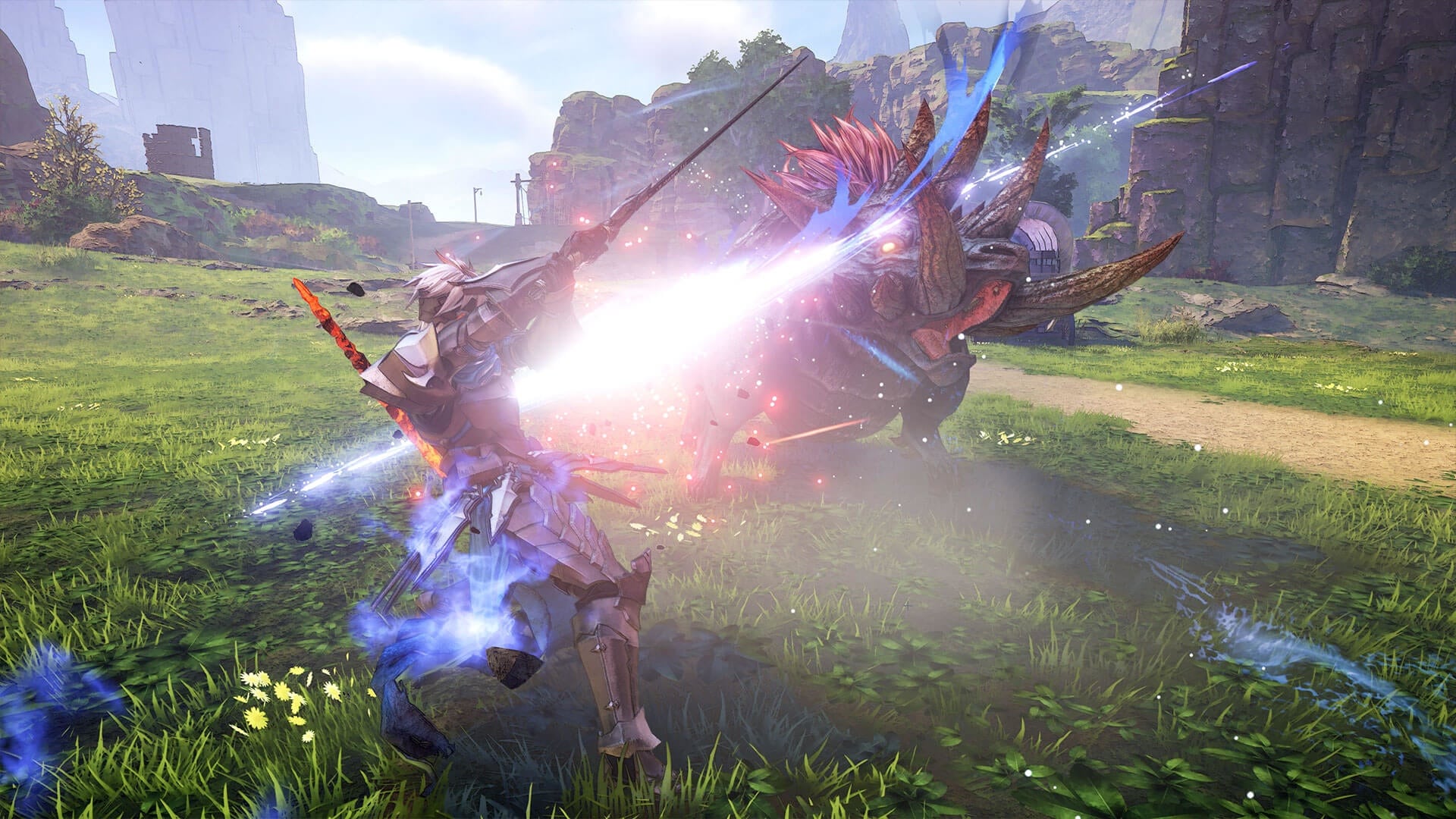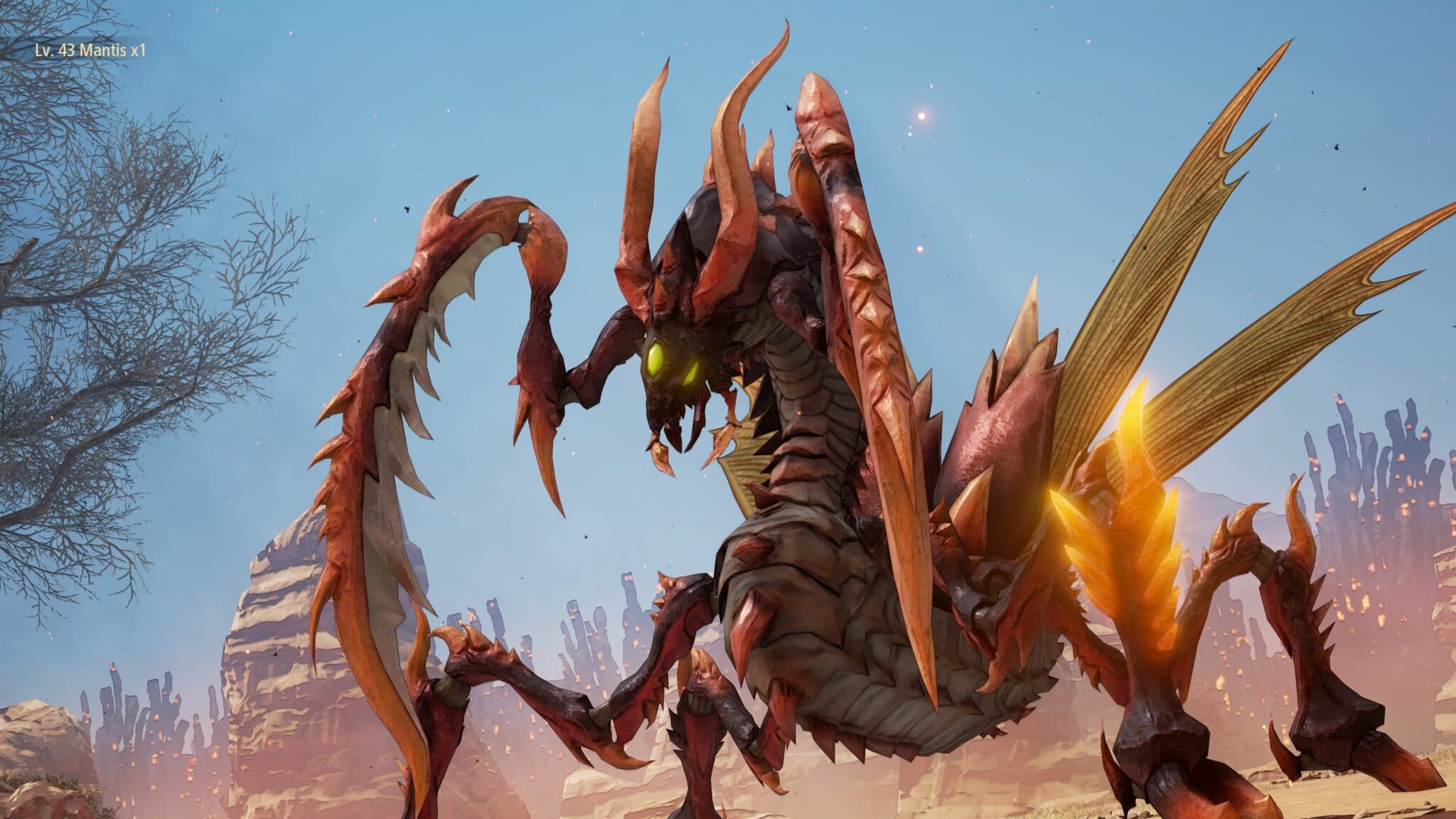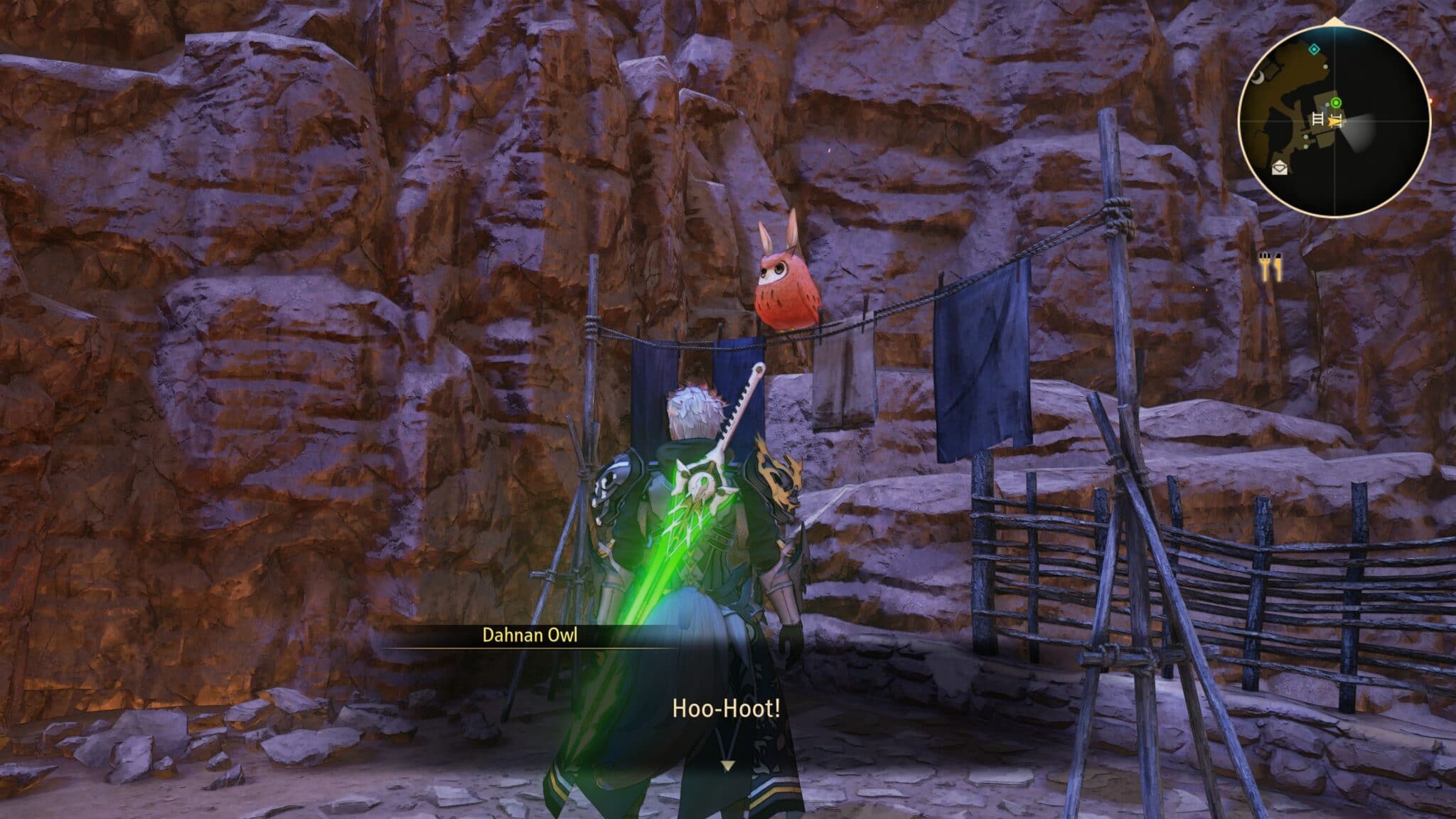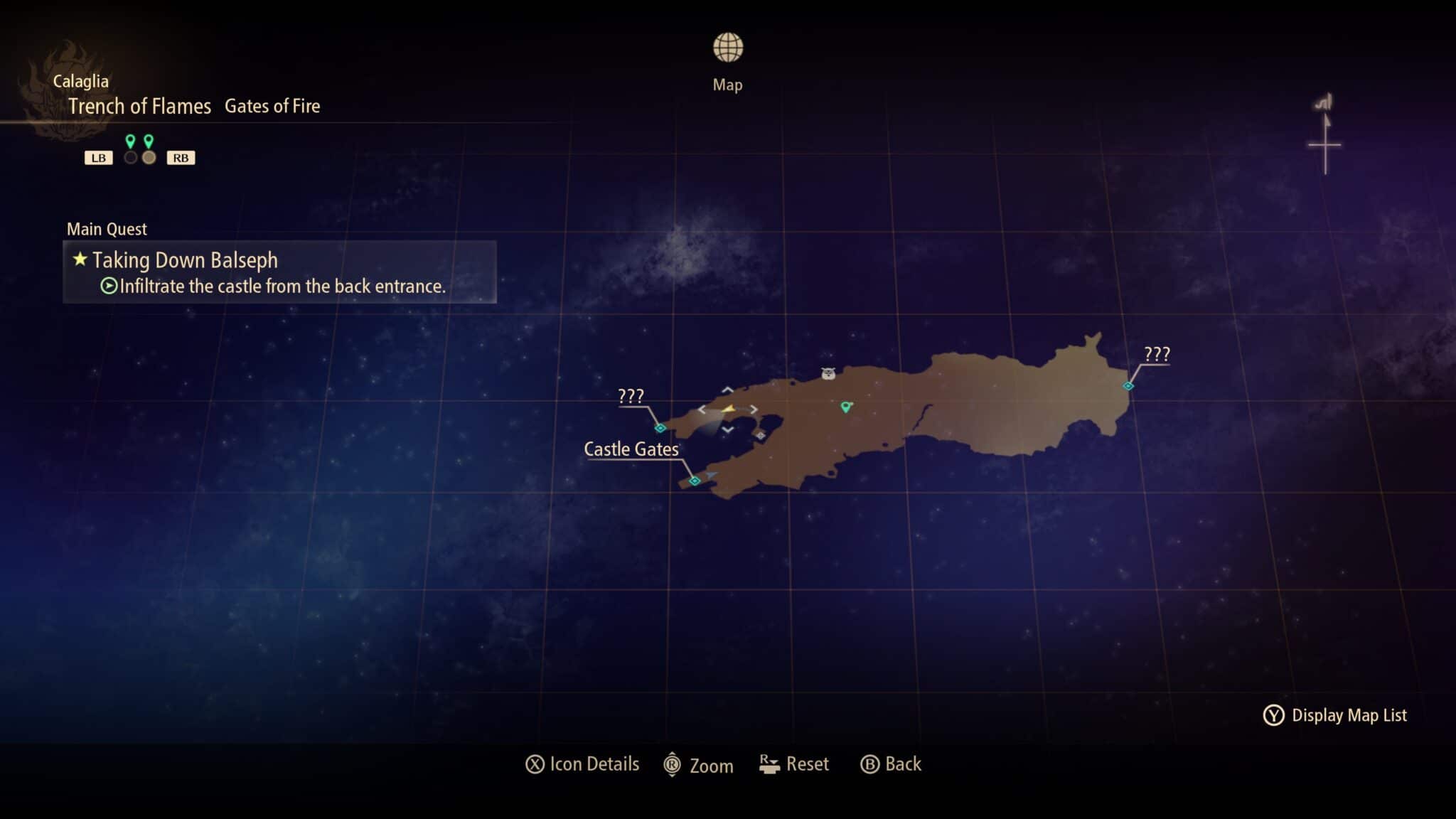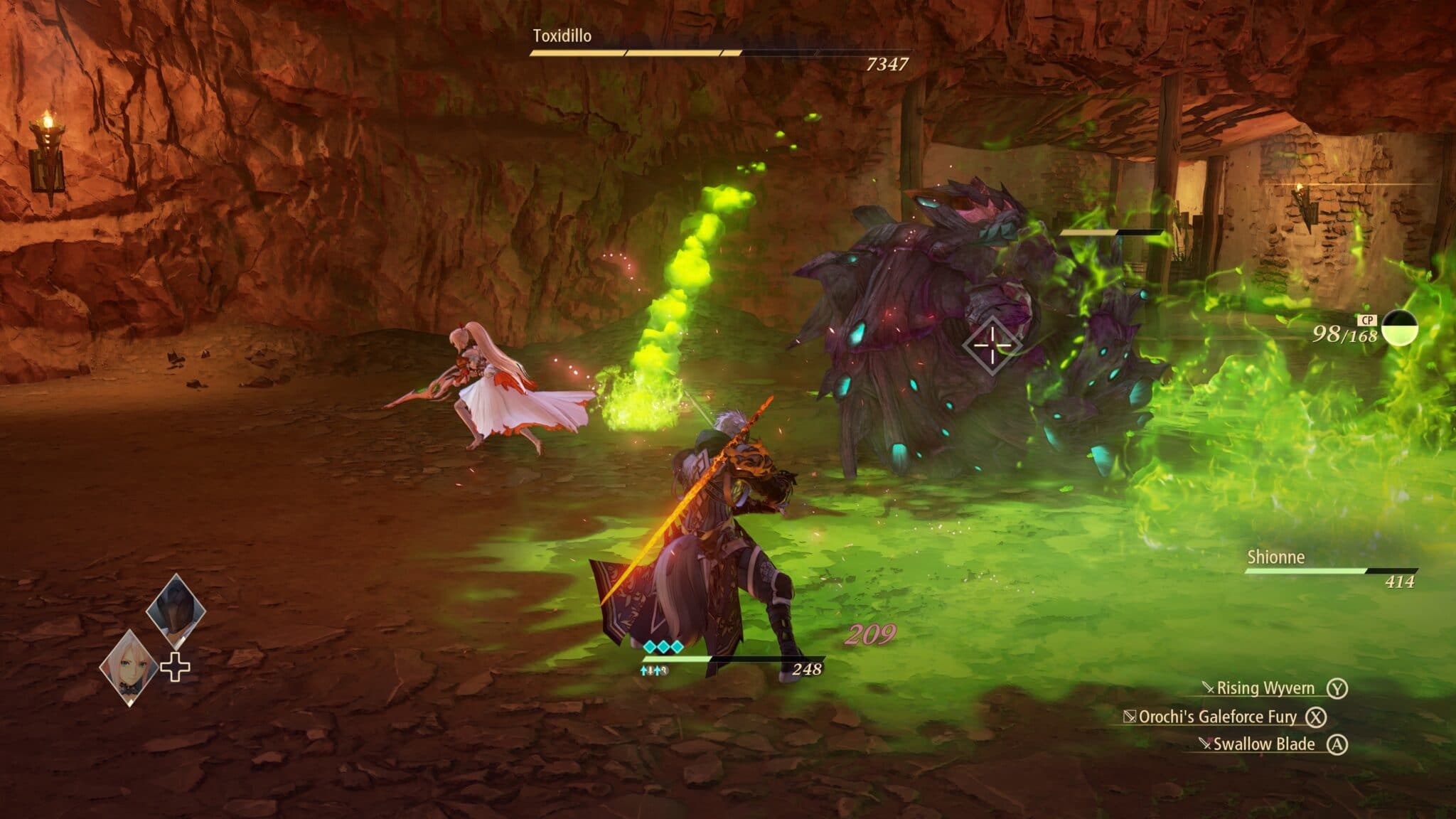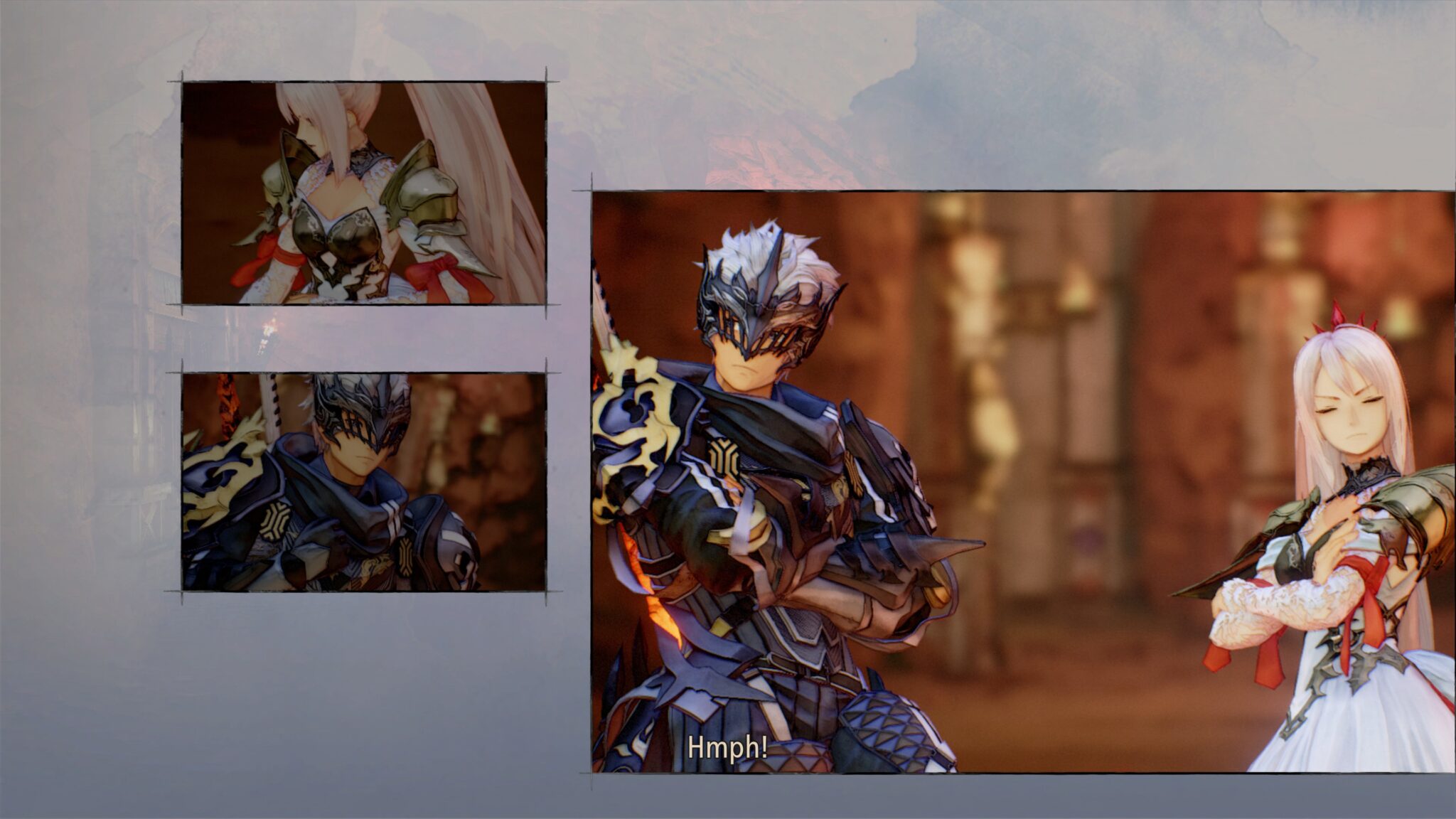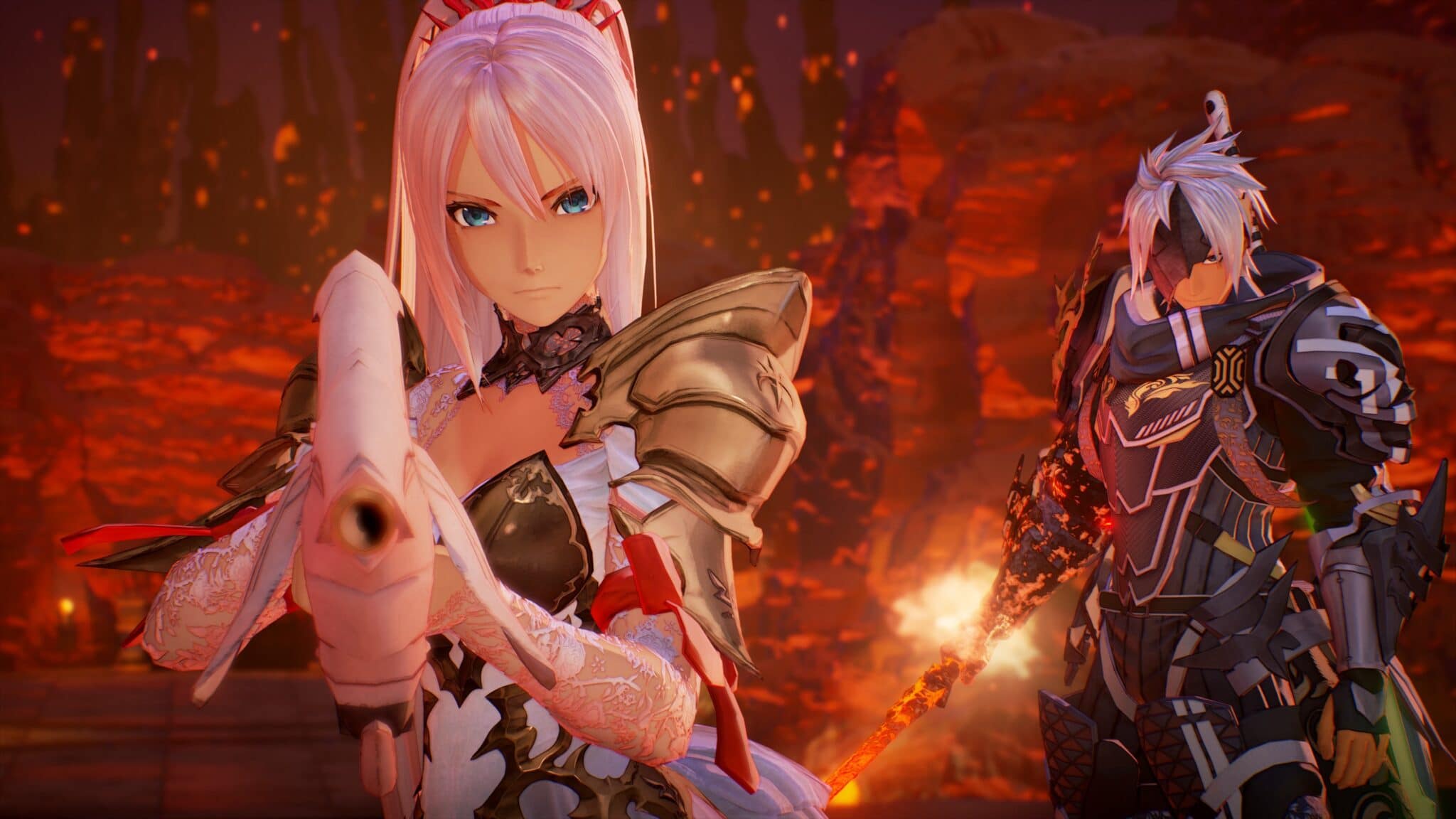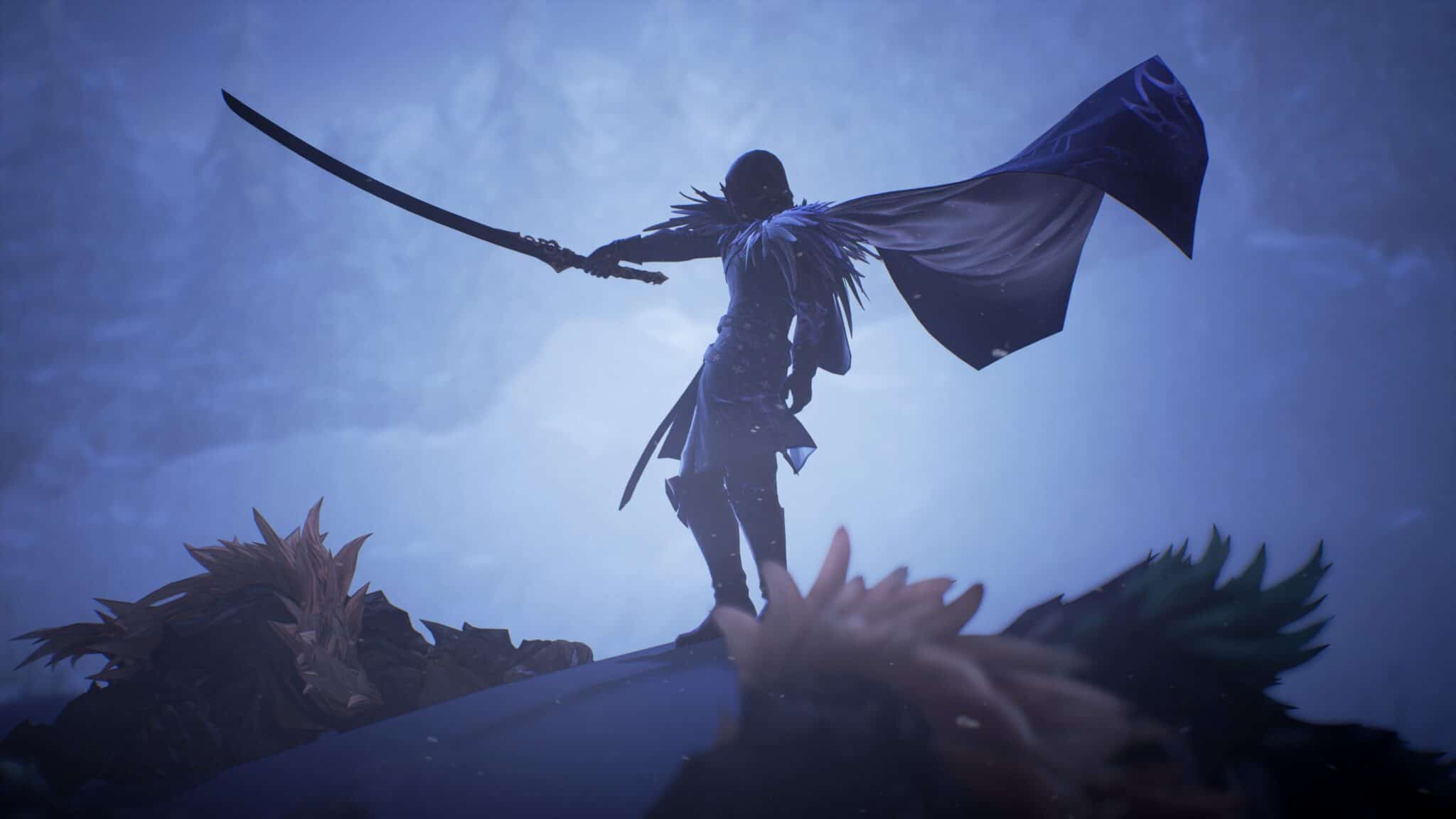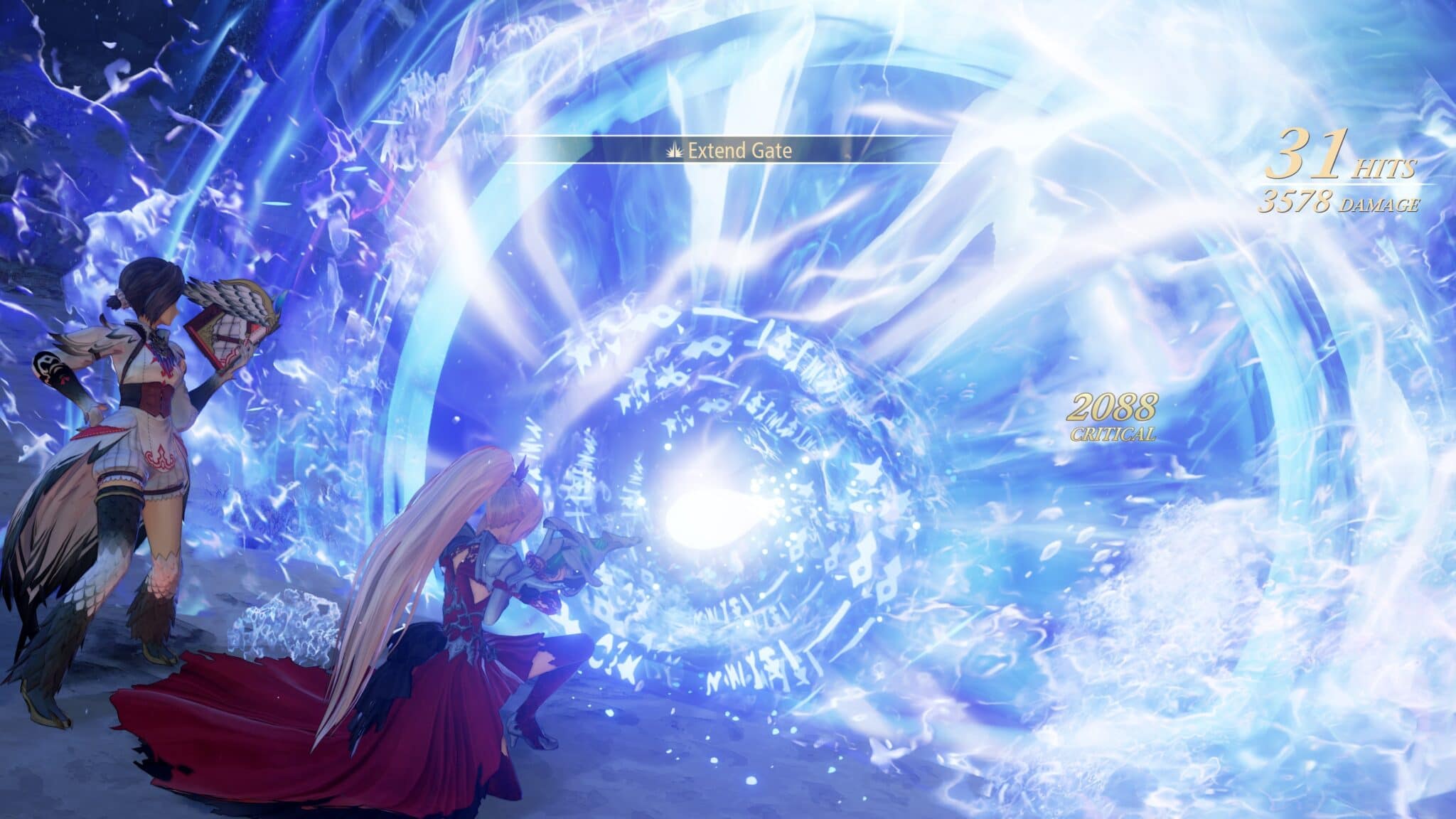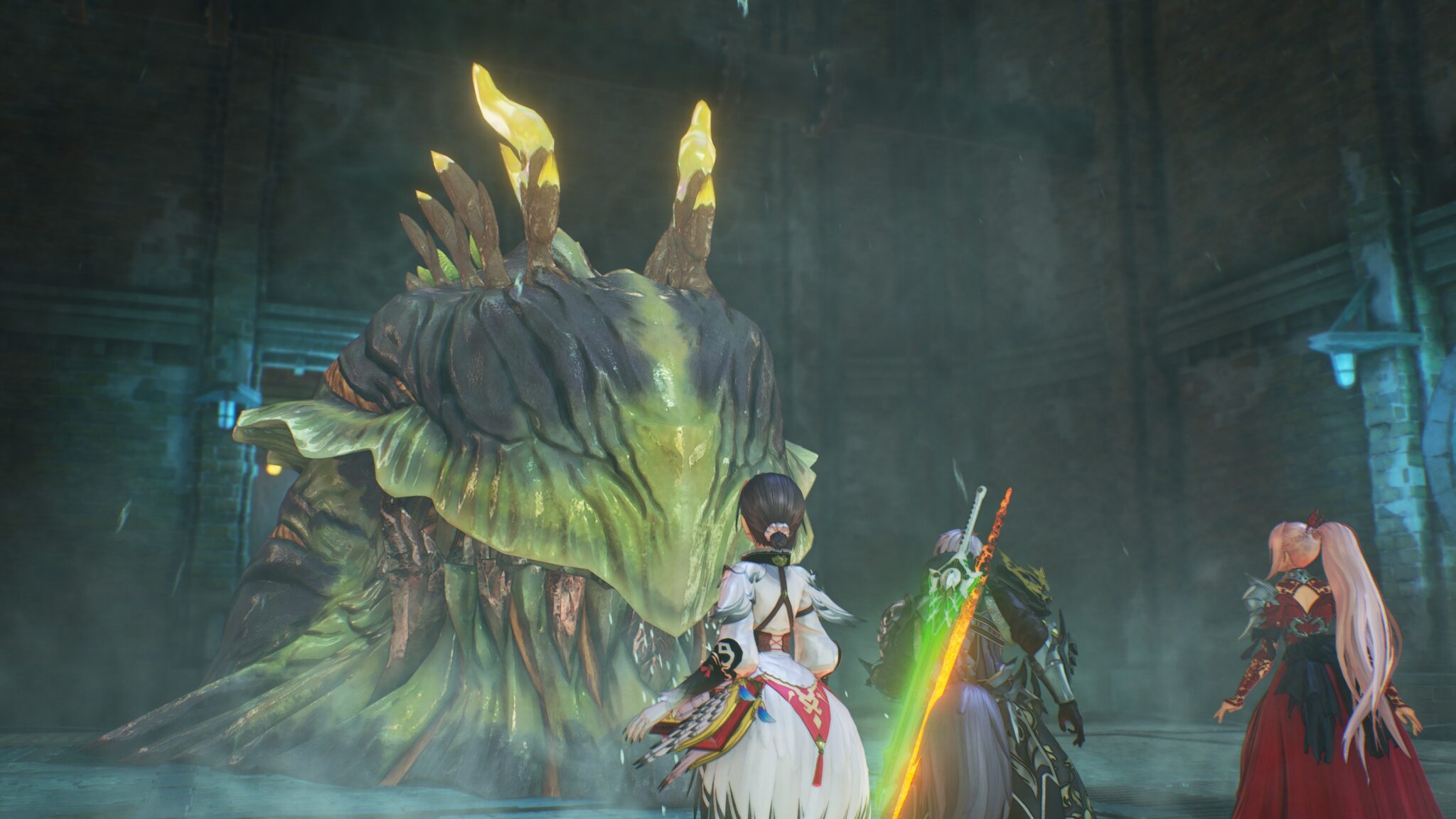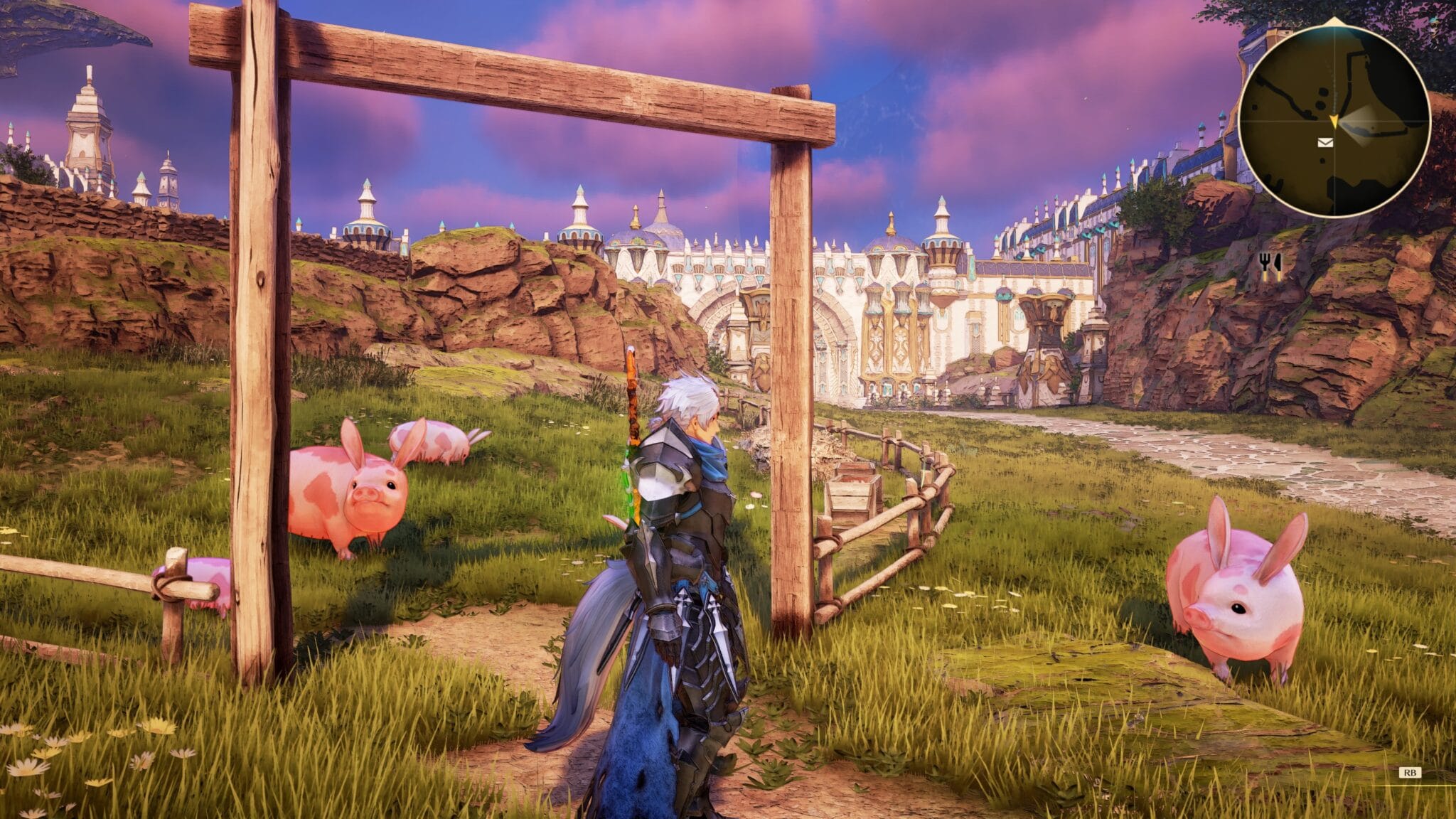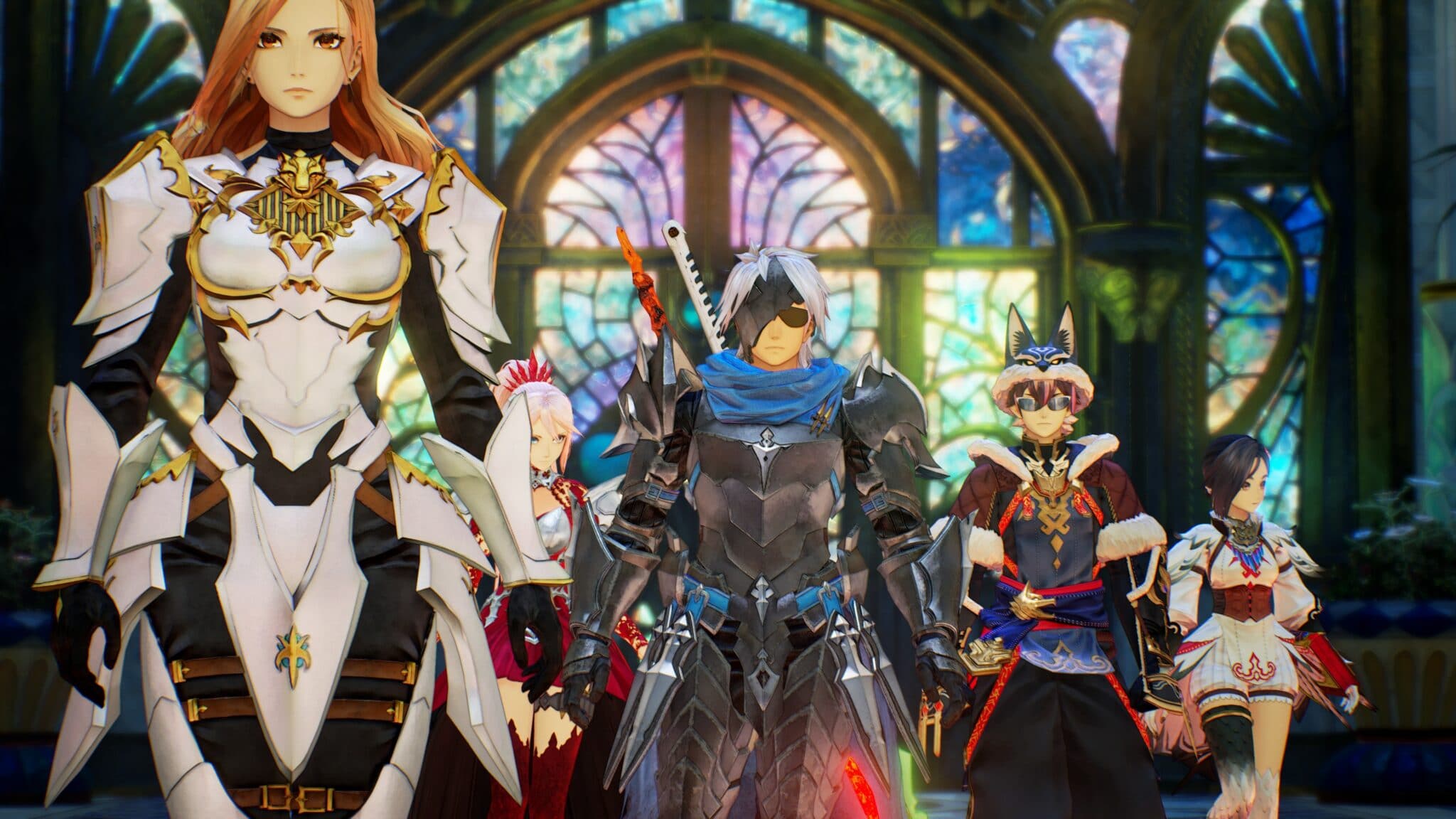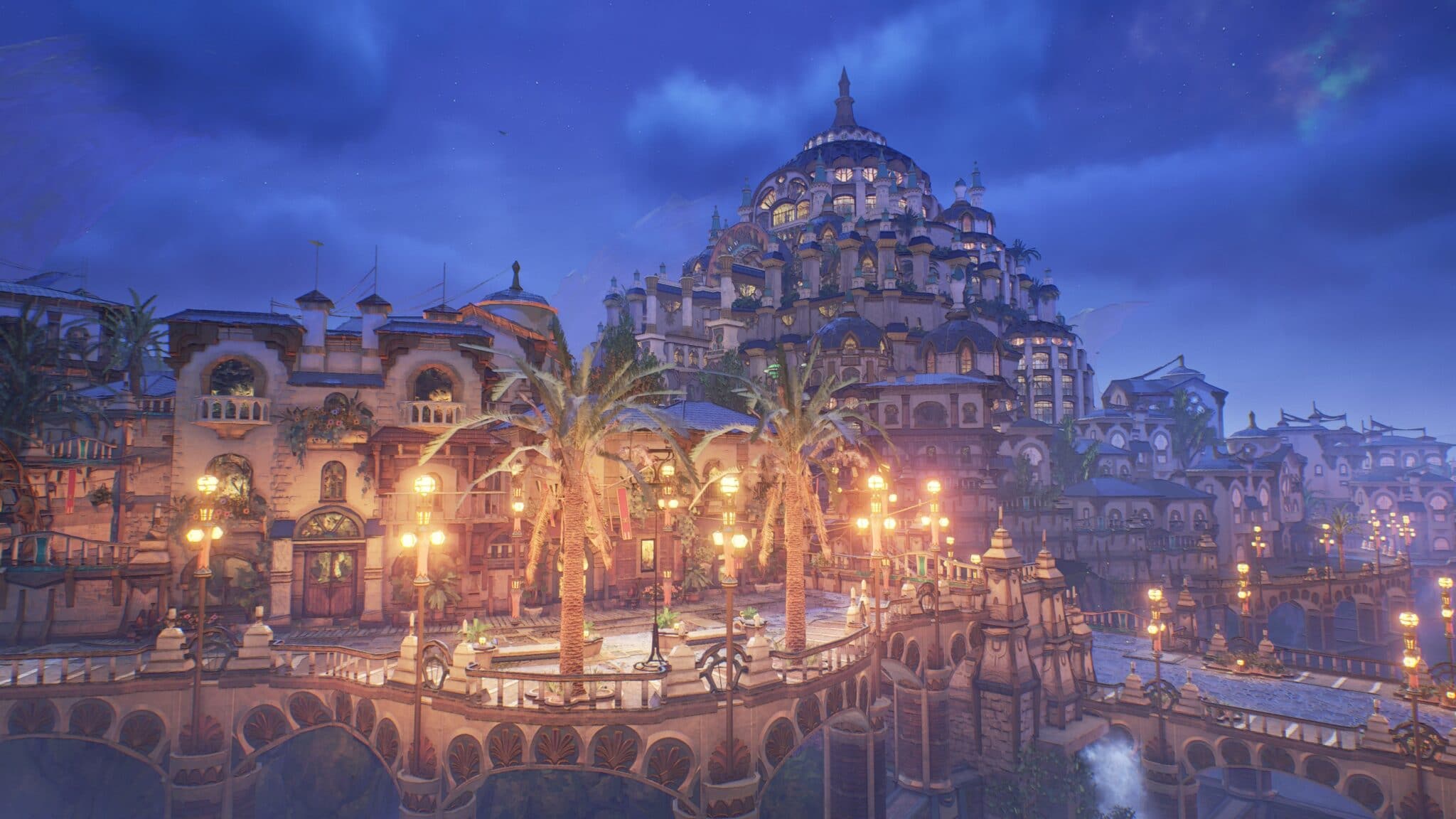Tales of Arise is a fabulously presented role-playing game that serves up all the clichés, dares little and rarely surprises, but makes no major mistakes.
Seldom have I had such a strong feeling with a brand new game that I have seen and experienced everything before, that I have played through it at least a dozen times in the past, as in the test of Tales of Arise.
Yet the role-playing game has an insanely strong presentation, fantastic voice acting and some cool, surprising twists in the story. But the big highlights and its chic open world are hidden in the second half of the game – and before that you first have to wade through 15 hours of gameplay that is at most traditional for JRPGs.
Tales of Arise basically does very little new. Compared to earlier parts of the series, there are changes and improvements, but you should not expect the turning point for the series announced by the publisher with this game. It also suffers from its nasty monetisation, which you’d best ignore, which is unfortunately much easier said than done.
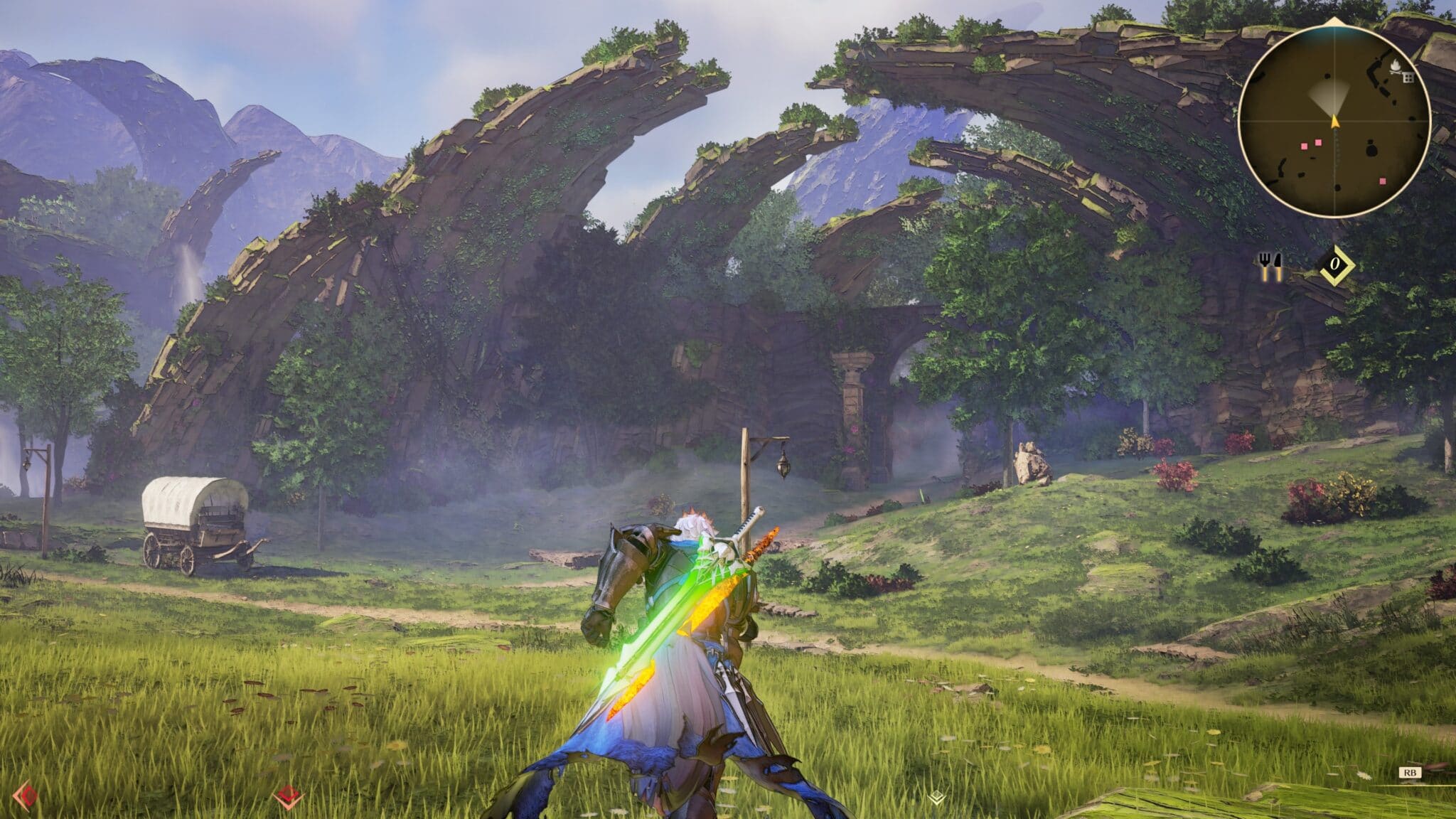
Table of Contents
Good vs. Evil
The planets Rena and Dahna are at loggerheads with each other. The inhabitants of Dahna have enslaved the Renans, exploit them and oppress them. The life of a Renan is worth next to nothing and as a player in the role of the initially nameless main character without memory, it is your everyday life to slave away for your inhuman rulers.
The setting of Tales of Arise is bleak and depressing and captivates from the first moment, even if for quite a while it simply plays out as a classic battle of the oppressed, good underdogs against the abysmally evil exploiters. For Alphen, the hero of the story, quite quickly joins a few insurgents and makes it his mission to kill off the five ruling lords of Dahna and put an end to slavery once and for all.
Thankfully, things don’t remain so uncreatively black and white. There are a few cool twists and surprises in the course of the story, but Tales of Arise takes its time with them. You’ll easily be on the road for ten to fifteen hours before the game finally picks up speed, takes the training wheels off you and gets going to some extent.
When it finally does, the game will be really good and finally a lot of fun, but until then you have to grit your teeth and in the meantime experience a hit parade of clichés alongside rather shallow gameplay.
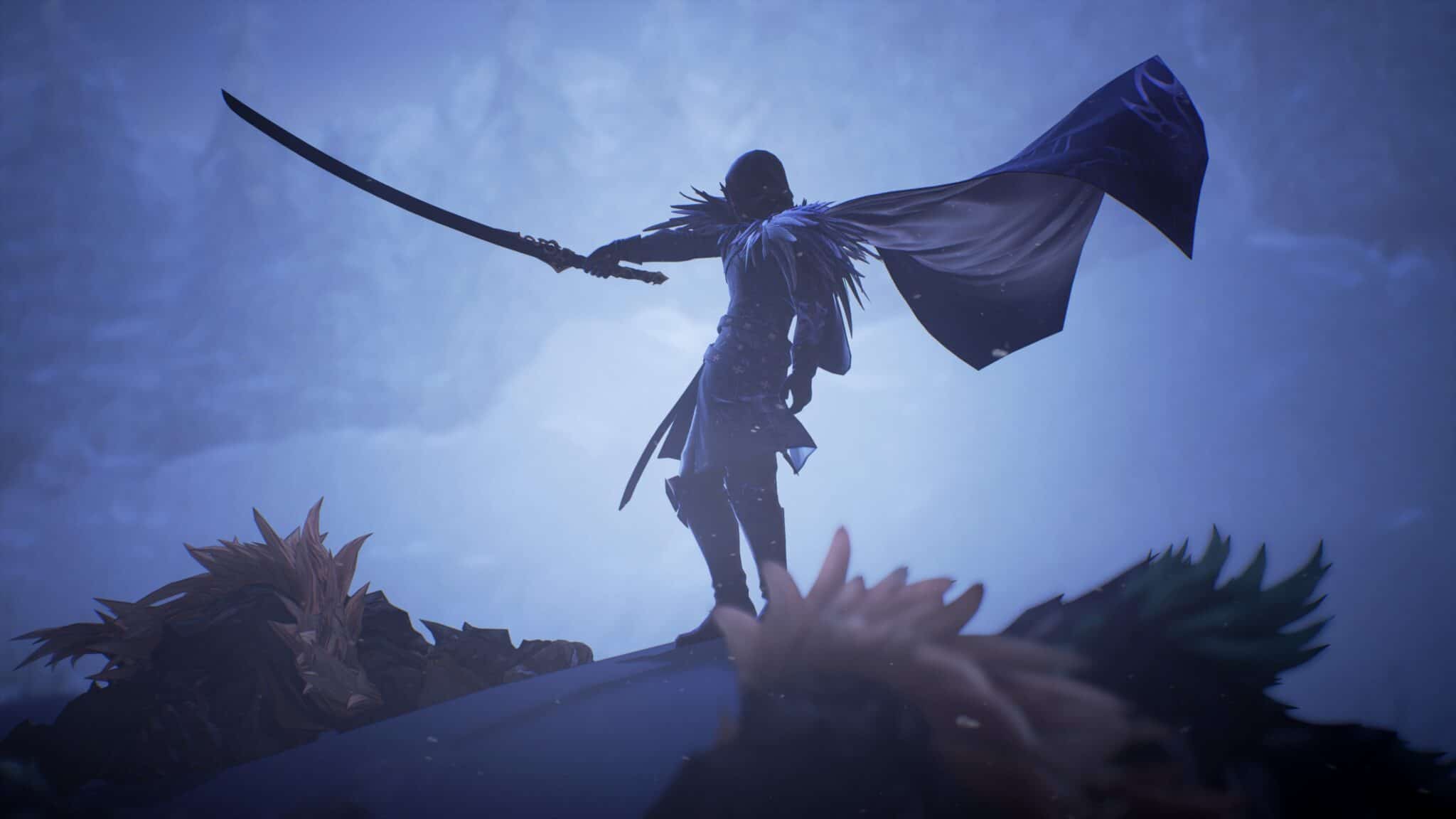
Did you call me fat?
If you have ever played a JRPG, various moments in the game will surely sound familiar to you:
- The hero just shows up one day and remembers nothing, until a fateful moment symbolised by the breaking of a mask.
- A female character needs new clothes EXACTLY NOW, without argument!
- The sound of stomach growling, constant conversations about food and a figure that can stuff a superhuman amount into herself.
- A grizzled veteran who initially holds the reins and guides you until exactly what you expect after the first five minutes of play happens.
- A character with a cute pet that henceforth serves as the group’s mascot and makes stupid noises.
- An aloof, introverted protagonist and an optimistic swordsman who warms her heart through heroism and selflessness. And on and on it goes.
The story gets really good when it finally gets going. It’s carried by excellent voice actors who you listen to in either English or Japanese (reading German on-screen text if you want it).
The characters are endearing and strongly acted. Because I’m an inhuman who likes to understand dialogue rather than just read it, I played mostly with English voiceover and found most of the voice actors excellent and believable.
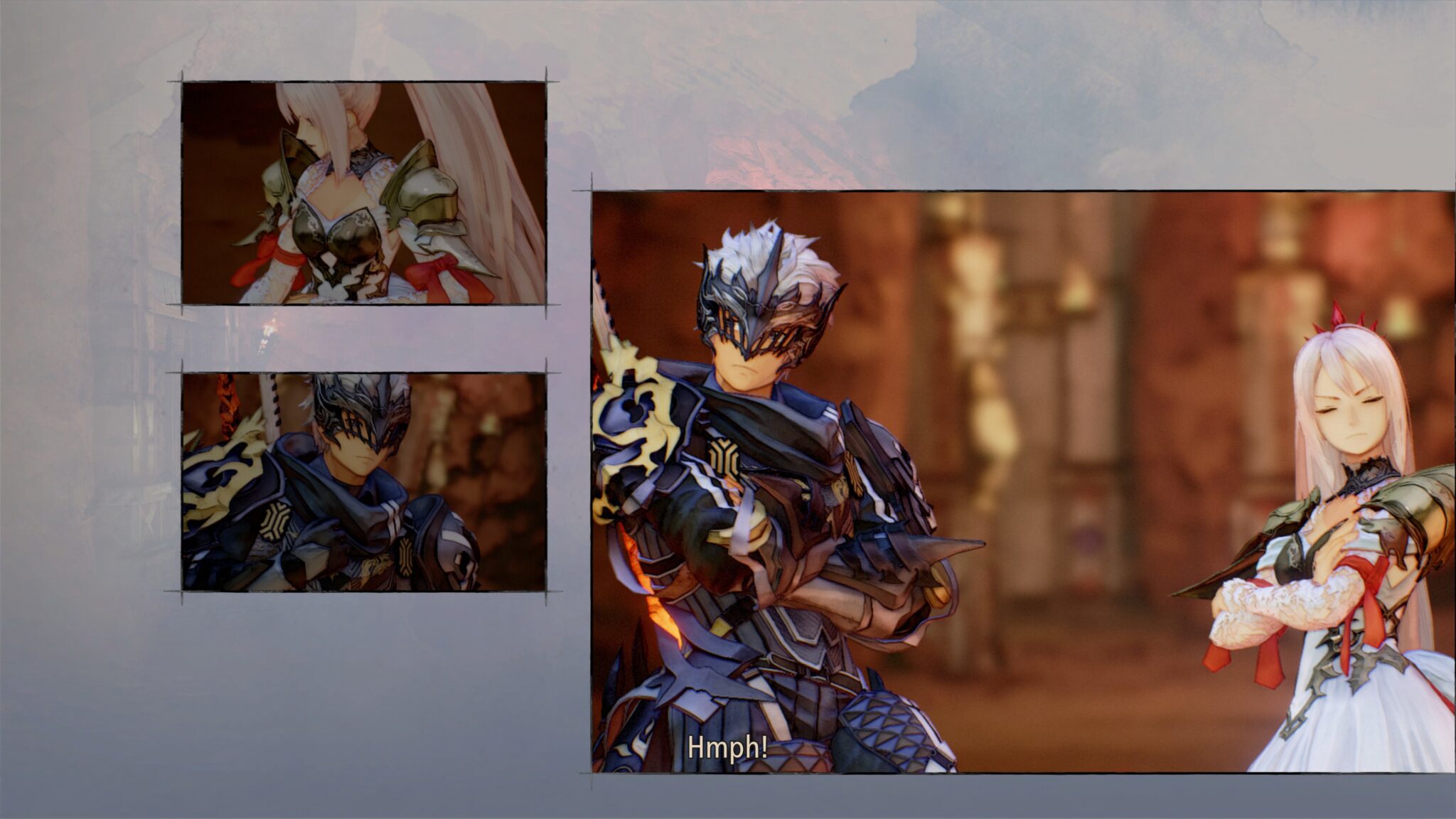
Many moments are emotionally moving because they are very well acted and spoken, even if the genre-typical overacting and constant sighs, groans and other anime breathing noises are of course also fully part of the programme here.
You spend as much time in the game with sometimes very long dialogues and cutscenes as with battles and exploring the game world. What belongs to the main story is usually fully dubbed, smaller conversations with NPCs and texts for side missions remain silent.
Chaos instead of precision
The biggest changes and revisions can be found in the battle system of Tales of Arise. Until now, the game has been ridiculed by critics as a button masher, in which comparatively little depends on tactics or playful skills, as long as you simply hit enough in conflicts with monsters.
To bring more finesse to the game, you now have a dodge roll that allows you to counterattack with perfect timing. The tactical use of your hero group’s particularly powerful boost attacks can make the difference between victory and defeat, especially in boss fights. For example, one character has a particularly powerful attack against airborne enemies, one character can dissolve enemy shields and blockades, another heroine interrupts and steals enemy spells, and so on.
Using these skills at the right moment instead of just spamming them will get you to your goal much faster and give you a higher score for battles, which will result in faster character advancements and unlocked attacks and spells (“Artes”) and powerful passive bonuses.
More tactics instead of just hitting things is always great, no question, but in Tales of Arise the implementation is still a bit lacking. For example, you can forget about the dodge roll if you are in the middle of a long attack animation. You’ll just swallow the enemy attack again.
In addition, the enemies are, as always, stupid and easy to outmanoeuvre, which balances out the game by regularly surrounding you with tons of enemies or fighting against creatures that act with generously distributed area damage. Many fights degenerate into sheer chaos, resulting in more button mashing.
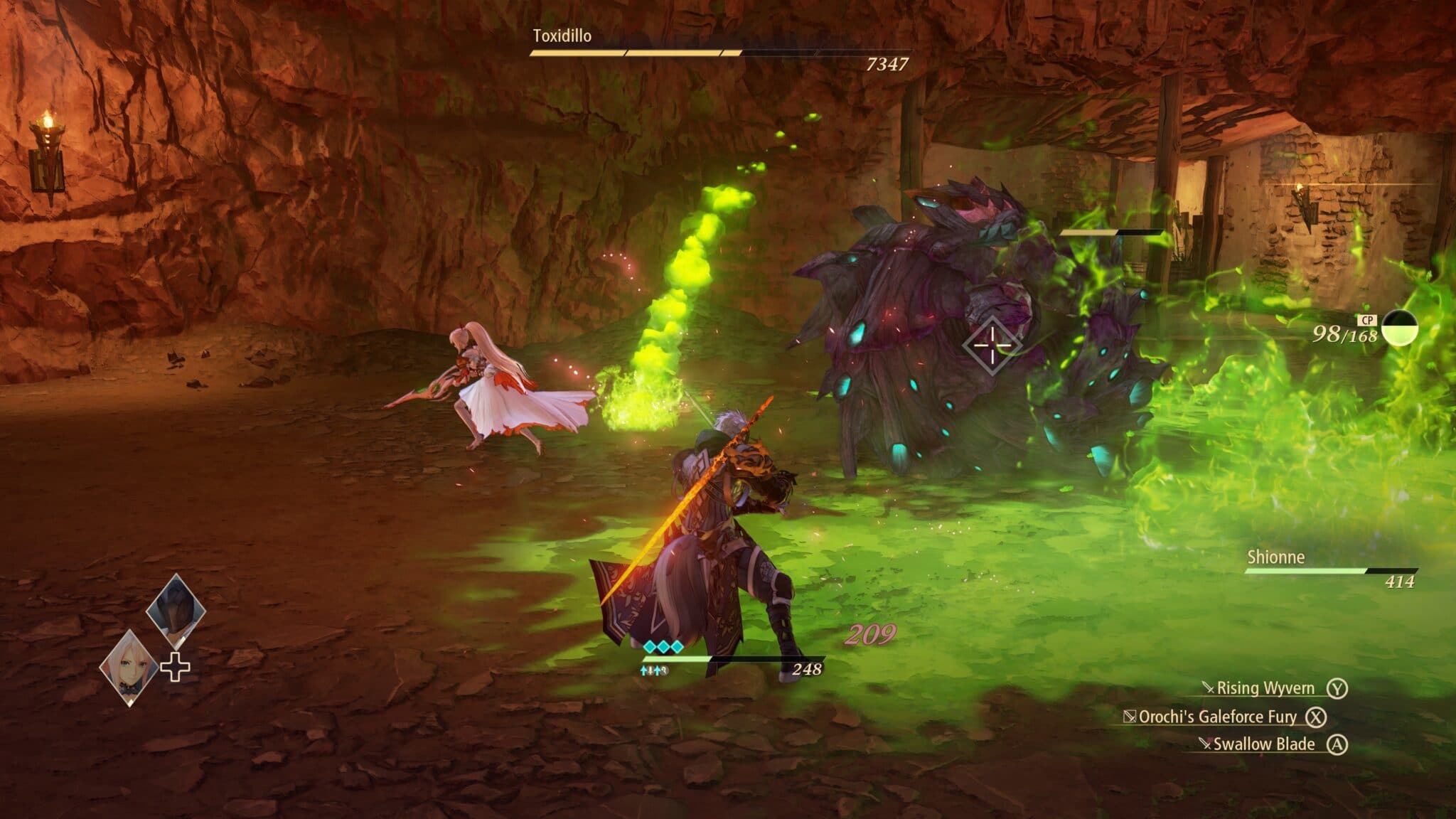
Those who like it can turn up the difficulty to the max and get the full package. Here, the strengths, weaknesses and resistances of your enemies also become relevant, which forces you to act much more tactically, especially in the regular boss fights. Depending on the battle situation, you then change the directly controlled character and give specific commands to your AI-controlled comrades-in-arms, which, however, also takes a lot of speed out of the action-packed battles in view of the cumbersome menus. In the PlayStation-exclusive Final Fantasy 7 Remake, this mix of action and tactics plays much more smoothly.
At the other extreme, there is a very casual-friendly difficulty level and the option to simply run battles on autopilot. So there is something for everyone.
In any case, it’s all best played via gamepad, but those who insist on rodent and keyboard get the option here, remappable if desired. And hey – Tales of Arise offers free saving instead of fixed save points! Thanks, Bandai Namco!
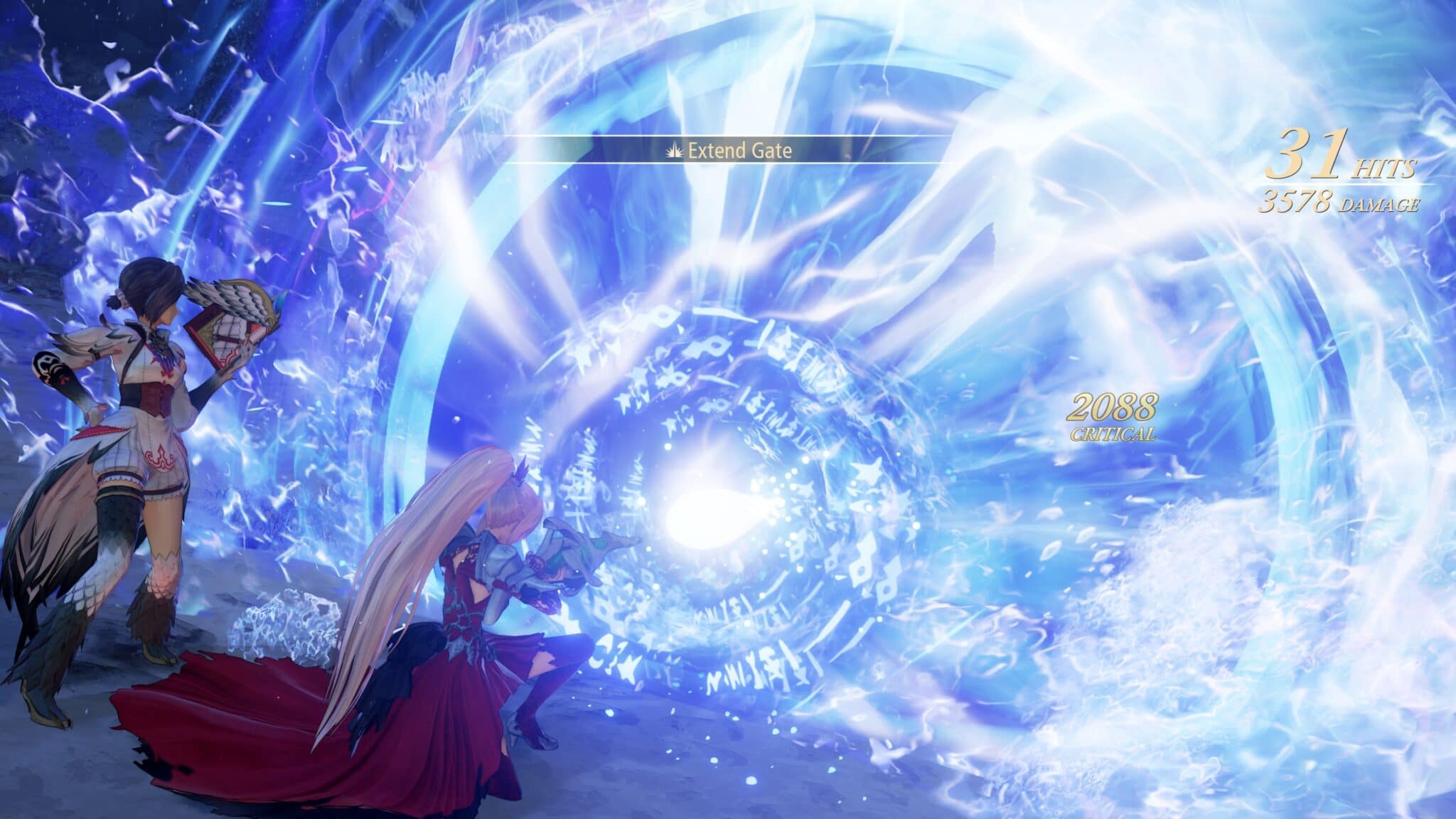
Hose and linear
Your hero group includes a maximum of six characters, up to four of whom are actively engaged in combat at any one time. By the time you’ve got them all together, you’ll be about halfway through the main story. Before that, you are mainly in pairs and threes, which makes battles in the first half of the game a little easier to handle.
Until then, the map design is also primitive. Most of the game environments are built like a tube, rarely is there a branch or more than one very obvious path to the goal. Those who deviate from the main path are usually rewarded with additional loot, hidden cosmetic items or optional boss fights.
Such a boss is usually much more demanding than ordinary opponents, and hidden and optional bosses offer fat rewards and a permanent increase in your CP (mana). Sometimes, however, the game puts a side boss in front of you that is 40 levels higher than the party. The message here is certainly “better come back later”, but backtracking is never really that turgid.
Giant snail
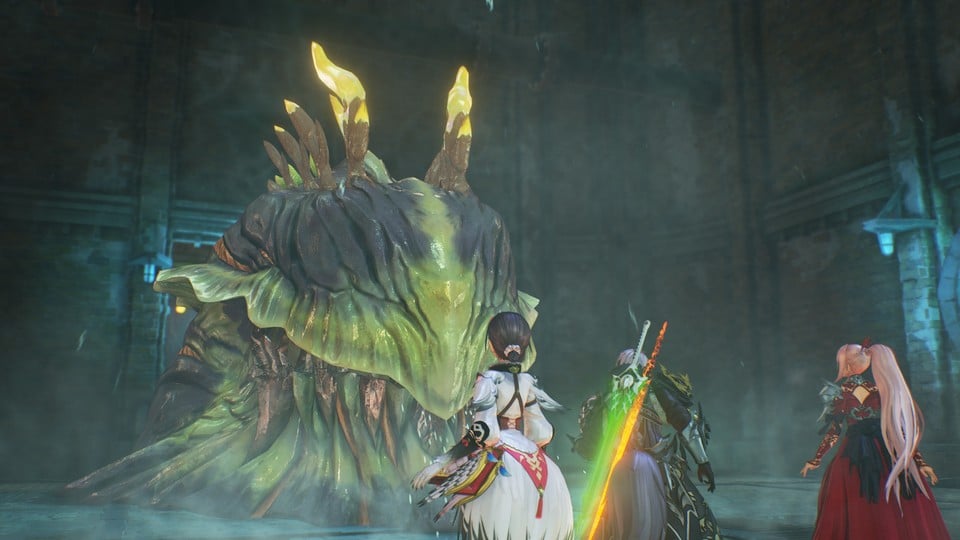
grasshopper
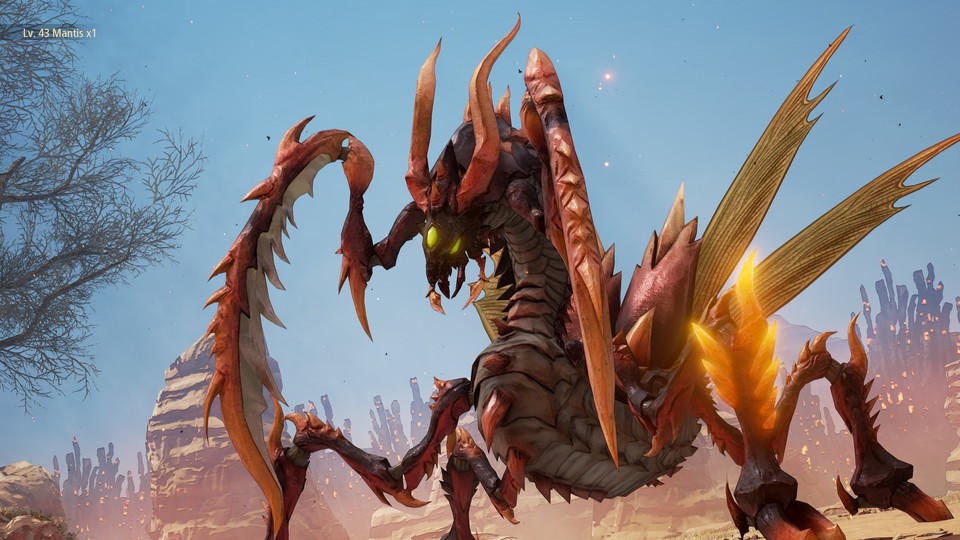
After the first two acts, the game world becomes more open, walkable areas become larger and dungeons more complex. Here you will be challenged for the first time, you can also give in to your urge to explore and explore more than just some tiny side passages. You will also gain access to fishing and your own farm, which will serve as an easy source of meat and fish.
This allows you to take full advantage of the numerous cooking recipes in the game for powerful food buffs. Gameplay-wise, these are quite a nice gimmick. I raised cows, chickens and pigs on my farm and hired some guard dogs and cats. It’s actually really nice when you return to the ranch after an exhausting dungeon and are greeted by its many colourful, happy and joyful animals. And there is only one thing you can do with them: Sausage and meat products. Sure, that’s the whole purpose of a farm, but it’s still a bit depressing. The world is bad.
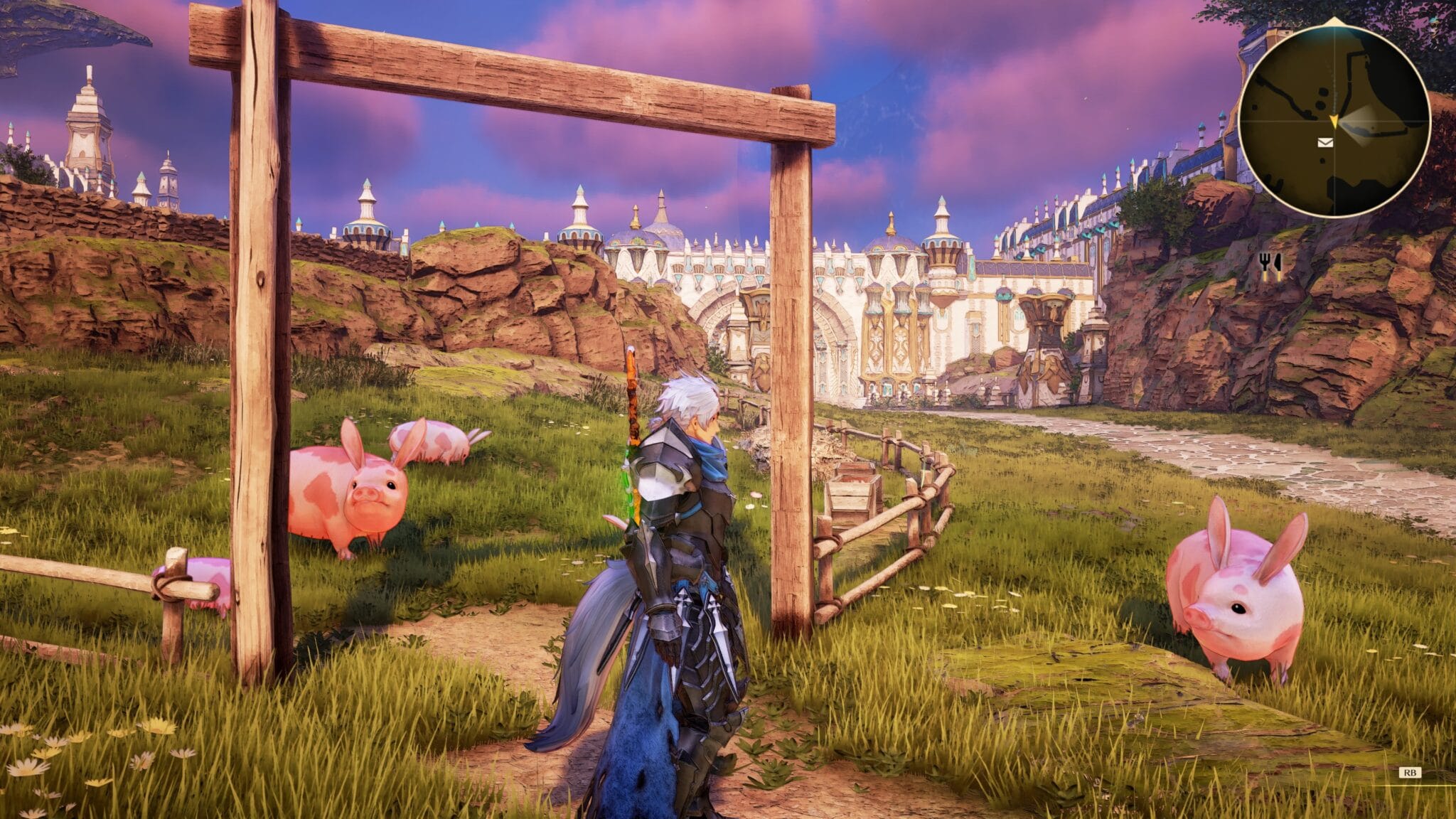
There is also a kind of coliseum again, where you fight for fame, honour and fancy equipment in solo and group battles with different rules. You can also use collectible resources to make your own equipment if arena battles are too stressful for you. There are tons of cool weapons and armour in the game.
Tip: If you feel like playing other games in the genre now or after playing Tales of Arise, we recommend our list of the best JRPGs for the PC.
First-class presentation
Tales of Arise looks wicked good! Instead of using the in-house engine, the developers rely for the first time on the Unreal Engine 4 with homemade shaders to keep the anime look of the series. The result is impressive and without a doubt one of the most visually beautiful JRPGs ever.
Special attacks and finishers are exaggerated to the max and spectacular, in many boss fights and dramatic cutscenes the world literally ends and no stone is left unturned. Equipment, costumes, environments, the emotions and facial animations of the characters – rarely have I enjoyed watching long conversations and cutscenes in a JRPG so much.
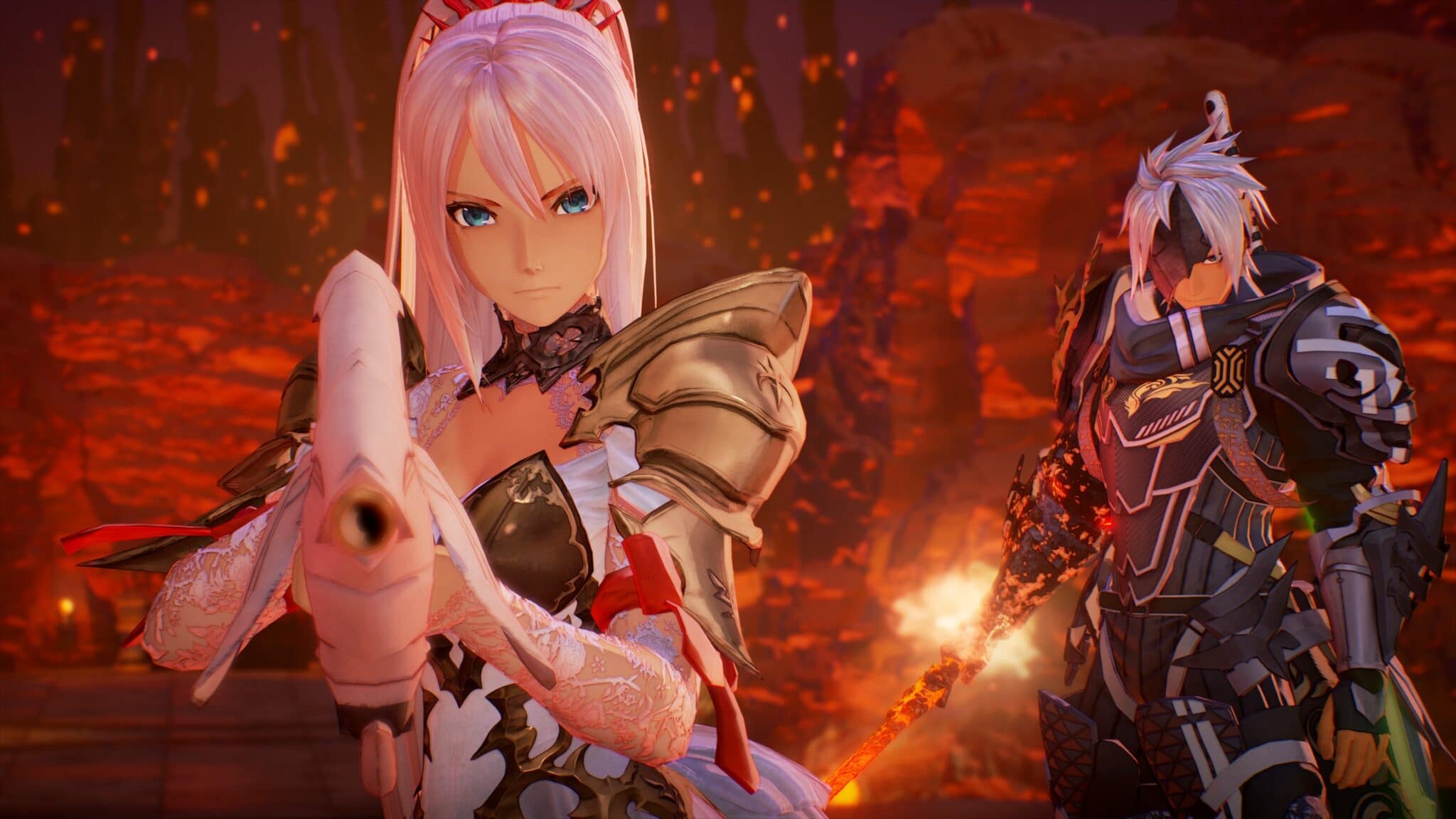
The game world once again features the obligatory Super Mario biomes (grass level, desert level, ice level and so on), all of which look really good. The conversations between the companions in the style of a visual novel, the so-called “skits”, are also more lively and more animated than before. The soundtrack also catches the ear well, even if it definitely doesn’t stay in the memory as long as in Final Fantasy or Xenoblade Chronicles.
In terms of PC performance, there were still minor jerks here and there in my test version, at least in 4K (Ryzen 7 5800x, RX 6800XT, 32 GB RAM), but they rarely had an unpleasant effect on the gaming experience. In addition, the display quality in cutscenes seems oddly higher than in the rest of the game – there your heroes suddenly have reflections in smoothly polished floors that disappear again a moment later in the regular game.
It’s not the end of the world, probably no normal person pays attention to it, but once it’s noticed, you never stop noticing it. Don’t be like me, don’t pay non-stop attention to minimal details!
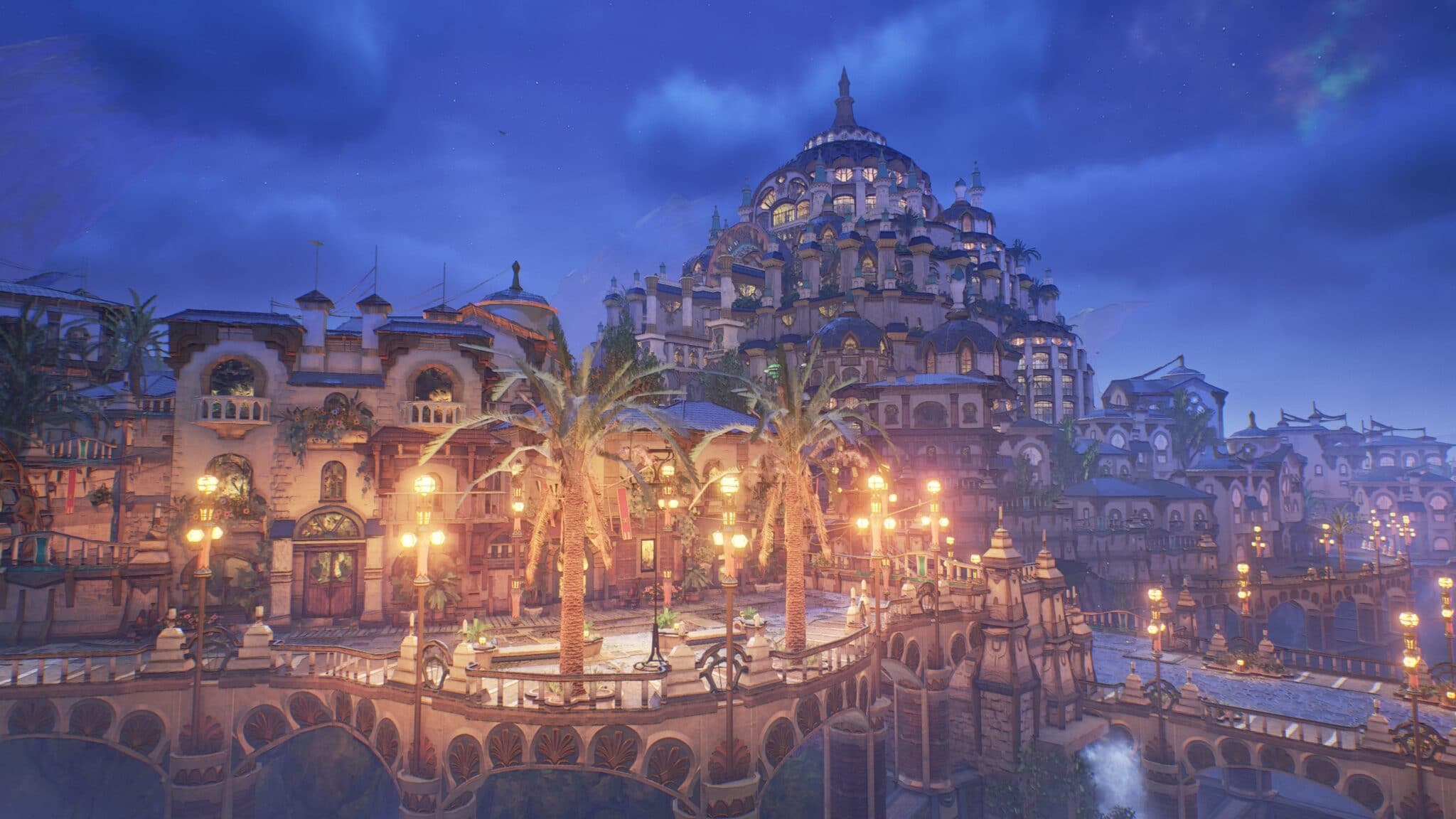
Nasty Monetised
In its cheapest version, Tales of Arise costs a hefty 60 euros. For that you get 40 to 80 hours of gameplay, depending on how extensively you explore the game world and how much time you want to spend away from the linear main story with boring and generic side quests (kill X of this, collect Y of that).
There’s also the obligatory New Game Plus again, which you can customise and simplify via collectible artefacts. This is a lot of very good JRPG for the money. But there are also less affordable editions of the game.
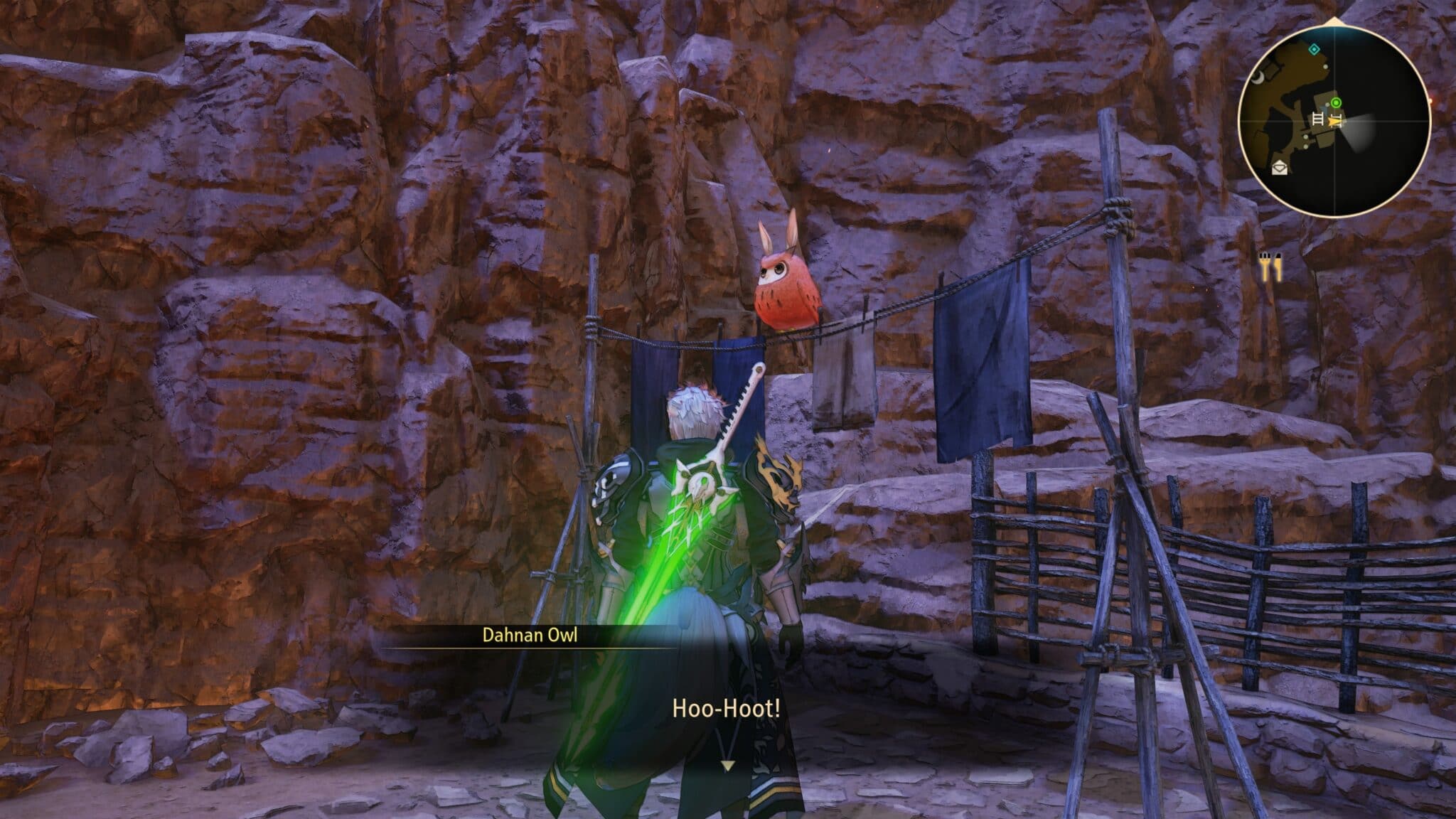
The super-upper-deluxe-with-cheese-on-top edition for 90 euros, for example, includes tons of in-game currency, a permanent experience booster, abysmally powerful weapons and armour that trivialise game entry, and various costumes that in turn grant access to powerful new abilities and buffs. Here, real money buys a lot of power in the game and completely messes up the balancing.
In addition, even in my test version there is a glowing exclamation mark in the menu that constantly wants to draw my attention to new content in the real-money shop. There, for cash, you can get the obligatory extra skimpy beachwear and things like schoolgirl outfits, hair clips, hairstyles, wings, tails (for the back, that is) and other junk, if you’re into that and have too much cash.
Many costumes can be unlocked, others only for real money. Whether the blindfolds and sunglasses add to the atmosphere is up to you.” <src=”https://www.global-esports.news/wp-content/uploads/2021/09/Many-costumes-are-available-to-unlock-others-only-for-real-money.-Whether-the-blindfolds-and-sunglasses-contribute-to-the-atmosphere-you-have-to-know-for-yourself-scaled.jpg” width=”2048″ height=”1152″ />
Okay, Tales of Arise is a pure single player JRPG, I also wouldn’t talk about Pay2Win in a game that I can just play through on demand in story mode and with automatic battles without any effort. That’s why there is no devaluation based on our Pay2Win definition.
But if you pay more, you get more power, more abilities and more clothes. And whenever you want to load or save your game, an exclamation mark reminds you that there are some new sexy waifu outfits in the shop. You can handle it that way, but then you shouldn’t be surprised if it only goes down so well with fans and the gaming press.


